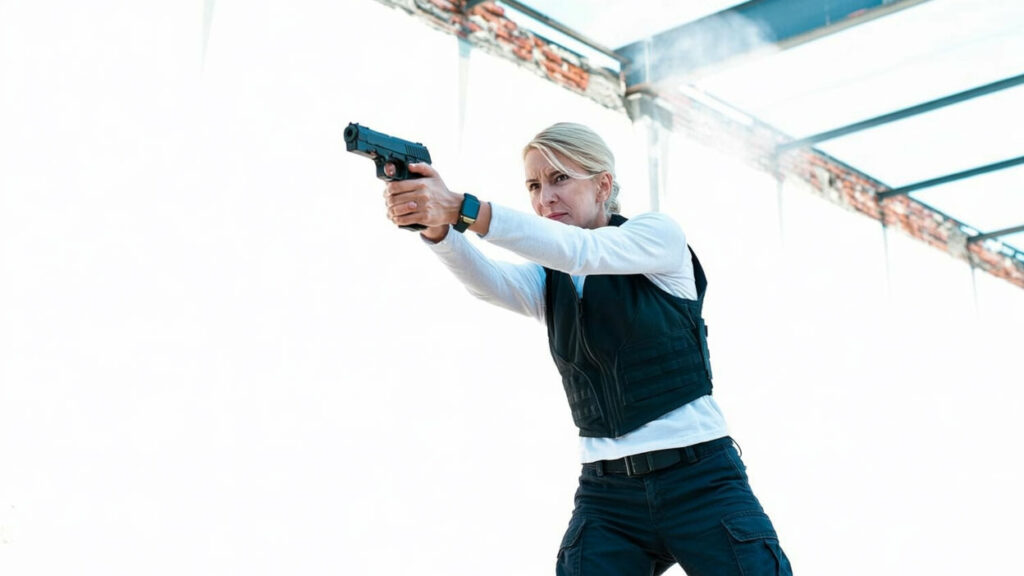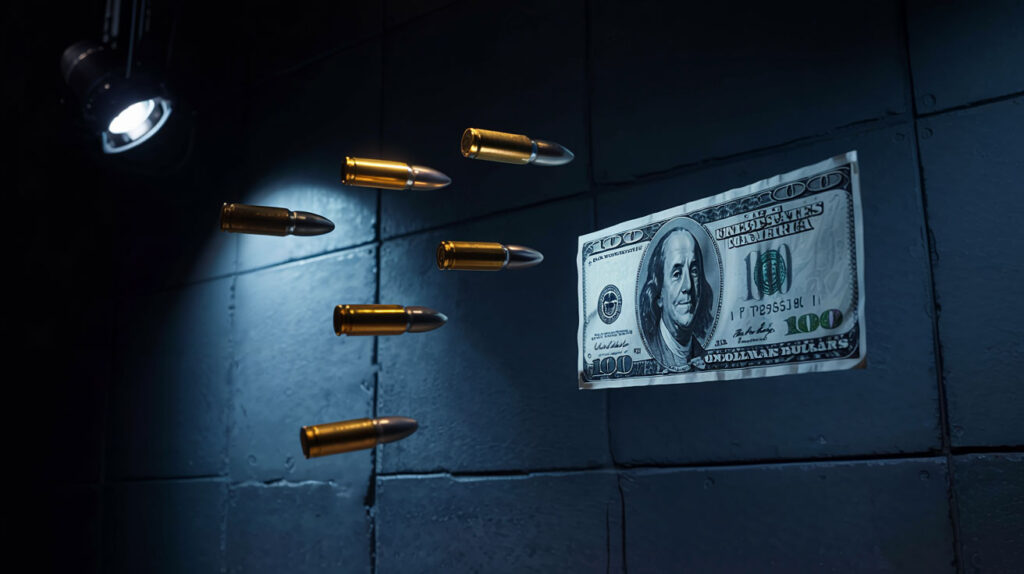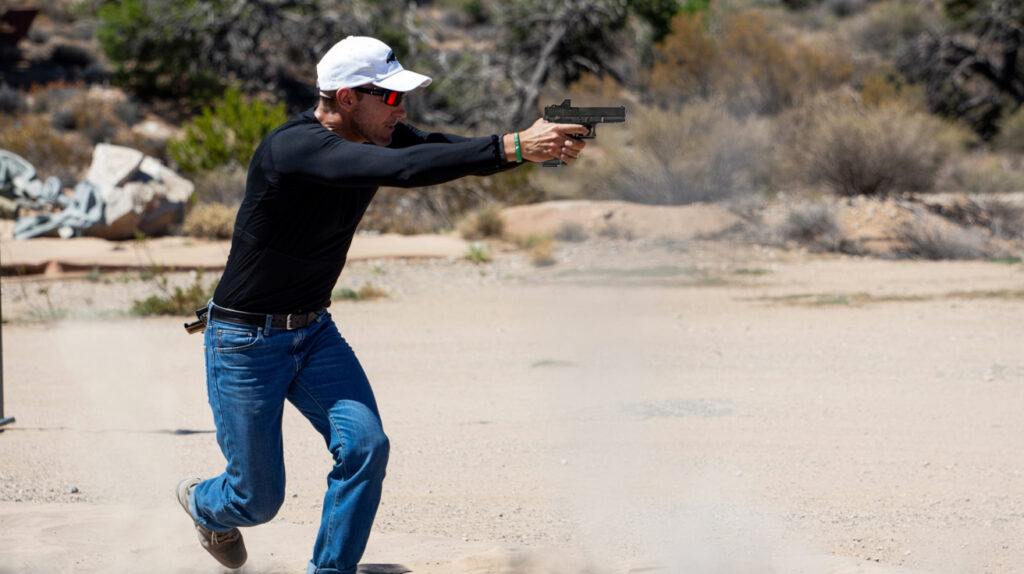Ditch the Permit Class Why Tactical Pistol Training Really Matters
Whether you’re new to carrying a defensive firearm or have years of experience, understanding the physiological effects of stress, mastering defensive shooting fundamentals, and training for real-world scenarios can make the difference between success and failure when facing a genuine threat. This article will guide you through the essential components of tactical pistol training that prepare you not just to shoot accurately at the range, but to defend yourself effectively when it matters most.
The Tactical Readiness Gap
Many Americans purchase and carry firearms for personal protection, yet a significant number remain inadequately prepared to actually defend themselves when faced with a violent encounter. This gap isn’t just about hitting paper targets—it’s about developing a complete set of physical and mental skills that will serve you when your life depends on it.
As firearms expert Jeff Cooper famously noted, “Owning a handgun doesn’t make you armed any more than owning a guitar makes you a musician.” This insight highlights the gap between merely possessing a gun and being truly equipped to use it effectively and responsibly.
Why Basic Pistol Training Falls Short
In the United States, millions of civilians carry firearms for personal protection, expecting to defend themselves effectively in life-threatening encounters. Defensive shootings, however, are high-stress situations that trigger the body’s acute stress response – often called the “fight-or-flight” reflex – which can profoundly affect performance.
Training literature clearly indicates a shortfall between the skills people think they have and the skills they would need in a violent confrontation. A firearms instructor from Philadelphia summarized the risk: “The worst person that you can be around is a person who has a firearm and no training…every round that you miss your intended target with has an attorney’s name attached to it.”
The truth is that most standard concealed carry classes focus primarily on basic safety and operation rather than the complex skills needed in a real defensive situation.
Training for Combat Reality: The Core Components
1. Understanding How Stress Affects Shooting Accuracy
When a person perceives mortal danger, the adrenal glands flood the bloodstream with adrenaline (epinephrine), dubbed “the most powerful hormone in the body”. This surge triggers well-documented effects on vision, motor control, and cognition.
At increased heart rates, you’ll experience:
- Fine Motor Skill Deterioration: Around 115 beats per minute, people begin to lose fine motor control. Tasks requiring precise hand-eye coordination become difficult as shakiness and clumsiness set in.
- Perceptual Narrowing: As heart rate passes roughly 145 bpm, individuals may experience loss of peripheral vision (tunnel vision) and auditory exclusion.
- Cognitive Overload: High stress can also diminish the capacity for complex thinking and memory. Above ~175 bpm, marked deterioration in cognitive processing and rational decision-making occurs.
Understanding these physiological responses is crucial because they directly impact your ability to defend yourself effectively.
2. Expert Shot Placement vs. Caliber Choice
Firearms debates often fixate on the caliber or stopping power of a gun, but experts and empirical data indicate that where you shoot an attacker matters far more than the size of the bullet. Precise shot placement (hitting vital organs or the central nervous system) is the key to quickly neutralizing a threat.
Defensive shooting literature explains that the human body—even a large body—has critical anatomical weak points: hits to the high center chest (heart, major vessels, lungs) or to the head (particularly the cranial-ocular cavity to reach the brain) are most likely to incapacitate an aggressor.
One firearms trainer vividly illustrated this point: “In any case, it is not ever going to be the caliber choice that stops the threat, but continuously good shot placement, while under stress. Consider: a round of .44 Magnum to the shin vs 4 rounds of 9mm to the head…”
3. Developing Tactical Legal Knowledge
Beyond physical skills, effective self-defense requires knowledge of the law – specifically, knowing when the use of deadly force is justified and when it is not. Literature in legal studies and criminal justice has pointed out that many gun owners lack a deep understanding of self-defense laws, which vary by state.
Self-defense doctrines (such as “Stand Your Ground” vs. duty-to-retreat rules) and what constitutes an imminent threat can be complex. Prosecutors and defense attorneys have noted that a defender’s lack of legal knowledge can lead to mistakes that result in criminal charges, even if their intentions were protection.
In summary, credible training literature (such as classes by the NRA, USCCA, or experts like Massad Ayoob) consistently emphasize that understanding self-defense law is just as important as marksmanship.
4. Balancing Concealability and Dynamic Firearm Control
In recent years, the number of Americans carrying concealed handguns has surged. As of 2023, there were nearly 22.9 million active concealed carry permit holders nationwide, and this figure excludes additional individuals in the growing number of permitless-carry states.
Responding to this demand, firearm manufacturers have raced to produce ever-smaller, lighter pistols optimized for concealment. Indeed, the concealed-carry boom has driven a “movement towards smaller, lighter, and more concealable guns” for personal defense. Subcompact and micro-compact semi-automatic pistols (often chambered in 9mm or .380 ACP) have become especially popular for everyday carry due to their easy concealability.
However, there’s an important trade-off to consider:
A consistent theme in defensive firearms literature is the distinction between concealability (how easily a gun can be hidden on one’s person) and shootability (how easy and accurate it is to shoot, especially under stress). Small pistols excel at the former but often suffer in the latter. Firearms trainers note that while compact and subcompact pistols are popular for their ease of concealment, it’s crucial to balance size with shootability.
In other words, the more concealable a handgun, the more difficult it usually is to shoot accurately and control under real-world conditions. A micro-compact pistol’s diminutive size, which makes it nearly invisible under clothing, also means it typically has a short barrel and sight radius, a smaller grip, and lower mass. These factors inherently reduce shootability – for example, short sight radius and “snappy” recoil can make tiny guns significantly harder to aim and control.
When selecting a defensive pistol, you need to honestly assess your skill level and commit to training enough to overcome any shootability challenges your chosen firearm presents.
How to Bridge the Training Courses Gap
Implementing Realistic Tactical Training Methods
Static target practice, while valuable for developing fundamental accuracy in a controlled setting, falls short of preparing one for the dynamics of a real defensive gun use. On a static range, the target is predictable and there is no threat to the shooter; there are no screaming bystanders, no sudden movements or ambiguity about who the “bad guy” is, and the shooter’s heart rate remains normal.
Dynamic scenario-based training introduces the types of stimuli and pressure that mimic real encounters. This includes practicing drawing from concealment under time pressure, firing at moving targets, distinguishing shoot targets from no-shoot targets (e.g. aggressors vs. innocents), reloading and clearing malfunctions while under simulated attack, and experiencing the auditory/visual distractions of a chaotic environment. Such training serves two important functions. First, it refines motor skills under stress – repeated exposure to high-heart-rate conditions teaches the body and mind to perform needed actions (like aligning sights and pressing the trigger) even when fine motor ability is partially degraded.
Second, scenario training builds tactical judgment and mental conditioning. Trainees learn vital survival behaviors: taking cover instinctively, scanning for additional threats (to combat tunnel vision), issuing verbal challenges, and making quick friend-or-foe discriminations. Over time, these responses can become conditioned reflexes.
Establishing Law Enforcement-Inspired Practice Schedules
Firearms proficiency is perishable: muscle memory for a smooth draw and trigger press deteriorates without regular reinforcement. Karl Rehn emphasizes this point as well: “If you don’t train regularly, your skills fade. You can’t just take a class once, call it good, and hope for the best when your life is on the line.”
Our review found that only a minority of civilian carriers engage in routine practice (for example, dry-firing exercises or range sessions multiple times a month) at a level that would offset this skills degradation.
To be truly prepared, establish a consistent training schedule that includes:
- Regular dry-fire practice (daily if possible)
- Live-fire sessions at least monthly
- Scenario-based training several times per year
- Ongoing education on self-defense law
Conclusion
Carrying a firearm for self-defense is a profound responsibility that demands matching dedication. The adage “your safety is not a matter of size but of skill and preparedness” rings true. A well-trained person with a modest firearm is far more formidable than an untrained person with the fanciest pistol.
In high-stress moments, you will revert to your training – so it is incumbent to make sure that training is as close to the real event as possible. This conclusion is supported by both science and experience, and it carries important implications for personal responsibility and public policy in the realm of gun ownership and self-defense. The findings underscore that competence under stress is earned long before the incident occurs, on the training ground, and that an investment in realistic training is ultimately an investment in one’s own survival and the safety of those around them.
True defensive readiness comes from acknowledging the gap between ownership and mastery, then committing to the training needed to bridge that gap. Your life may depend on it.


